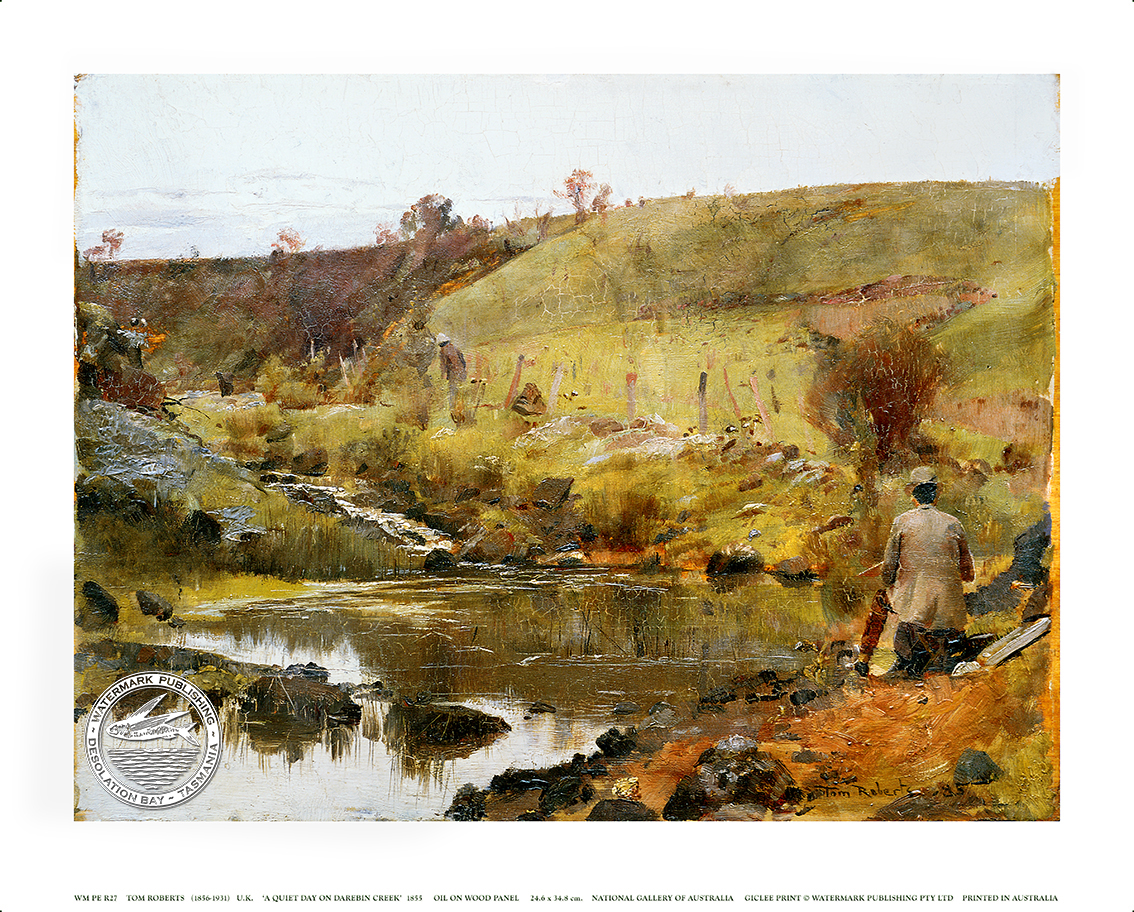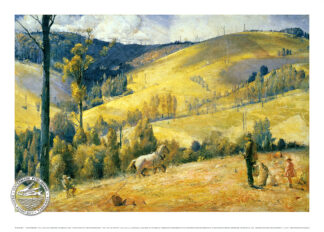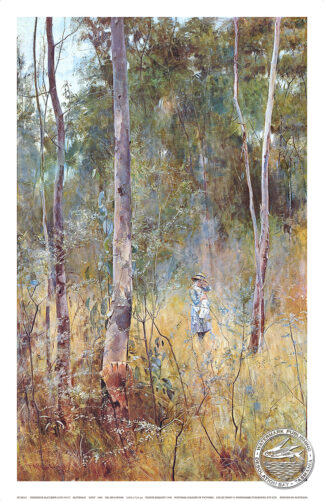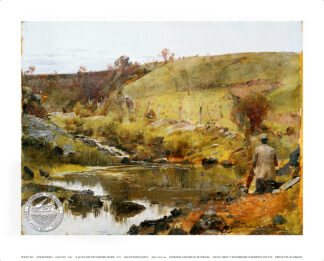Description
A Quiet Day at Darebin Creek by Tom Roberts (1885)
Introduction
A Quiet Day at Darebin Creek (1885) by Tom Roberts is a serene and intimate painting that celebrates the Australian landscape. Known as one of the leading artists of the Heidelberg School, Roberts often explored themes of rural life and the close relationship between people and nature. This artwork reflects his ability to capture both tranquillity and the gentle rhythms of the bush.
The Scene at Darebin Creek
The painting is set along Darebin Creek, which winds through the northern suburbs of Melbourne. Roberts depicts a small group of figures, likely farmers or local residents, resting near the creek. They are surrounded by native vegetation, tall trees, and the flowing water.
Soft, golden light fills the scene, creating a warm and peaceful atmosphere. The lush greenery and gentle movement of the creek highlight the natural harmony of the Australian countryside.
Use of Light and Composition
Roberts’ skill with light and shadow is central to this work. Sunlight filters through the trees, leaving dappled patterns across the water and ground. These subtle details bring texture and depth to the painting.
The figures appear small within the scene, blending naturally into their surroundings. This composition reflects the idea of people living quietly and respectfully alongside the land, without disrupting its beauty.
Significance of the Work
A Quiet Day at Darebin Creek is part of Roberts’ wider exploration of the Australian landscape. Like many of his works, it celebrates simple rural moments and the bond between people and nature. The painting conveys calm, contentment, and timeless beauty, making it one of his most touching portrayals of the bush.








